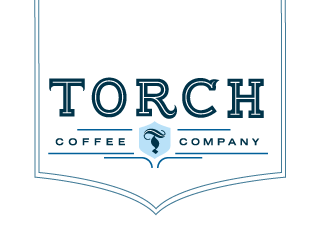Almost everyone who loves specialty coffee knows the three most common coffee species: Arabica, Robusta and Liberia.
The most popular and commonly consumed currently is Arabica. Almost everyone is coffee industry knows Arabica well and recognizes it for it’s quality. Personally, I am stand with the majority.
As a Q Grader, I had an unwavering loyalty to Arabica. I felt that only Arabica could produce the high quality aroma and flavor of specialty coffee. Granted, I have tried Robusta coffee from time to time, but still felt that it had no chance of joining the ranks of specialty coffee alongside Arabica.
However, the story between me and Robusta had only begun.
In July 2015, Torch Coffee Lab in Puer, Yunnan conducted the first R Grader course in mainland China.
At first, I simply wanted to get a better understanding of Robusta coffee, the species that accounts for about half of the world's coffee consumption. Why is the output so high and who would even enjoy drinking this lower grade product?
Bottle green: Robusta,
Light green: Robusta and Arabica
Yellow: Arabica
Although I did not personally like the taste of Robusta, my desire to learn more about coffee gave me the desire to understand and explore this branch of coffee.
To begin the experimental process, my coworkers and I drank Robusta from various origins for a whole week. When I drank the predictable bitterness of Robusta in the first cupping, I thought it was impossible to discuss these beans in terms of a specialty coffee standard.
This experiment only reinforced my prejudice against it; however, life is always full of surprises. As if God intended to tether my fate to Robusta, during one of the next cupping sessions, I tasted a coffee with a surprisingly high sweetness. It tasted as though someone had added a spoonful of honey right into the cup.
Everyone though there was a mistake and that someone had slipped an Arabica coffee into the cupping group. It was rich in flavor and full of floral aroma. The room was stunned upon finding out that the coffee on the table was actually a Robusta!
During that week of R grader course, we had fine Robusta coffee from around the world including Myanmar, Laos, Mexico, Uganda, and India. We found that Robusta coffee can not only be on a par with Arabica, but also has the potential to compete with higher quality Arabica coffees. My narrow mind was opened and enlightened with all the new possibilities!
This recent discovery is very exciting news for coffee culture. Because of Robusta's potential and own advantages, it is bound to play a decisive role in the specialty coffee industry in the future.
Due to the uncertainty of climate change, the typical environments that are suitable to grow Arabica are becoming fewer and far between. Robusta is more conducive to survival, and eventually it will play a more important and dependable role in the field of specialty coffee.
Robusta has a higher yield and contains more antioxidants than Arabica. It chemical make-up has nearly twice as much caffeine as Arabica, and is far more resistant to pests and diseases.
If you plan to work or are already working in the specialty coffee industry, mark my words, Robusta is in your future.
The Characteristics of Robusta
Genes are highly variant and resilient, and their genetic diversity is very broad.
Chromosome: 22
Shallow-rooted but high yields.
Pollination is cross-pollination.
Takes 10-11 months for the fruit to grow from flowering to ripening. Flowering time is uncertain.
Bean Shape: round tip
Bean Color: grey to grey-blue
The optimum temperature is 20-26 ° C on average.
Best growing altitude: 100-900 meters worldwide, 800-1,200 meters Uganda, Congo and Tanzania wild varieties
The origins of Robusta are very diverse, in the inlands of West and Central African and in the East African highlands.
Varieties are naturally distributed in Côte d'Ivoire, Cameroon, Rwanda, South Sudan, Uganda, Northern Tanzania, Zaire, Northwest Agra, Congo and Gabon.
Commercial coffee is distributed in the lowlands of Central and West Africa, the highlands of East Africa, Indonesia, Vietnam, India, Brazil, Ecuador, Guatemala and Mexico.
Antibodies against rust, fungi, insect pests and black fruit disease of coffee, but susceptible to vascular fungal diseases
Typical flavor characteristics: low aroma, low acidity, strong bitter taste, full-bodied, woody flavor, aftertaste with pyrolysis and spicy taste
Market
Market share is about 40%.
It is mainly used for blended espresso to increase body and produce thicker crema. We usually blend 5-15%, sometimes up to 25% of Robusta in total amount of roasted coffee.




























